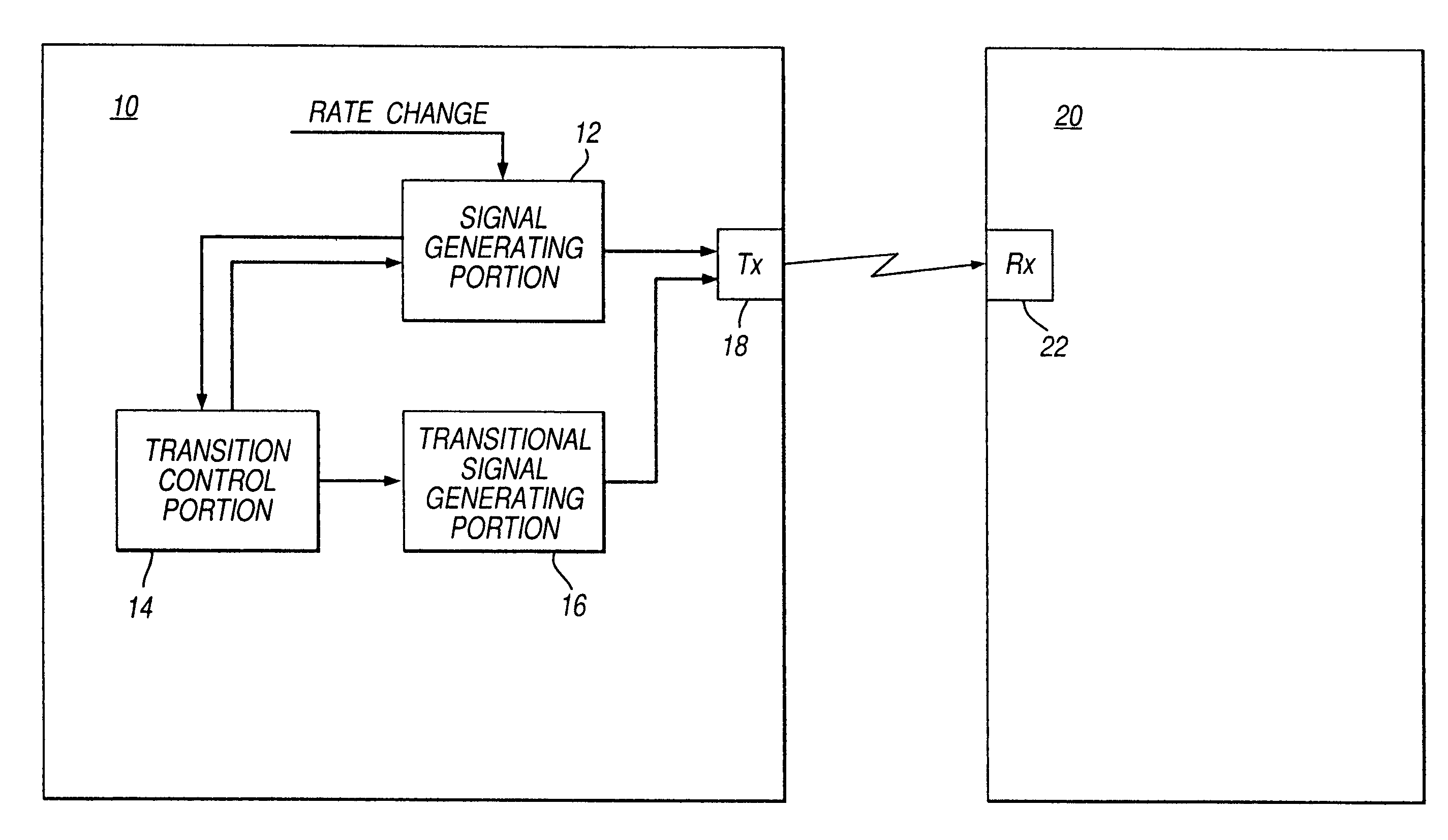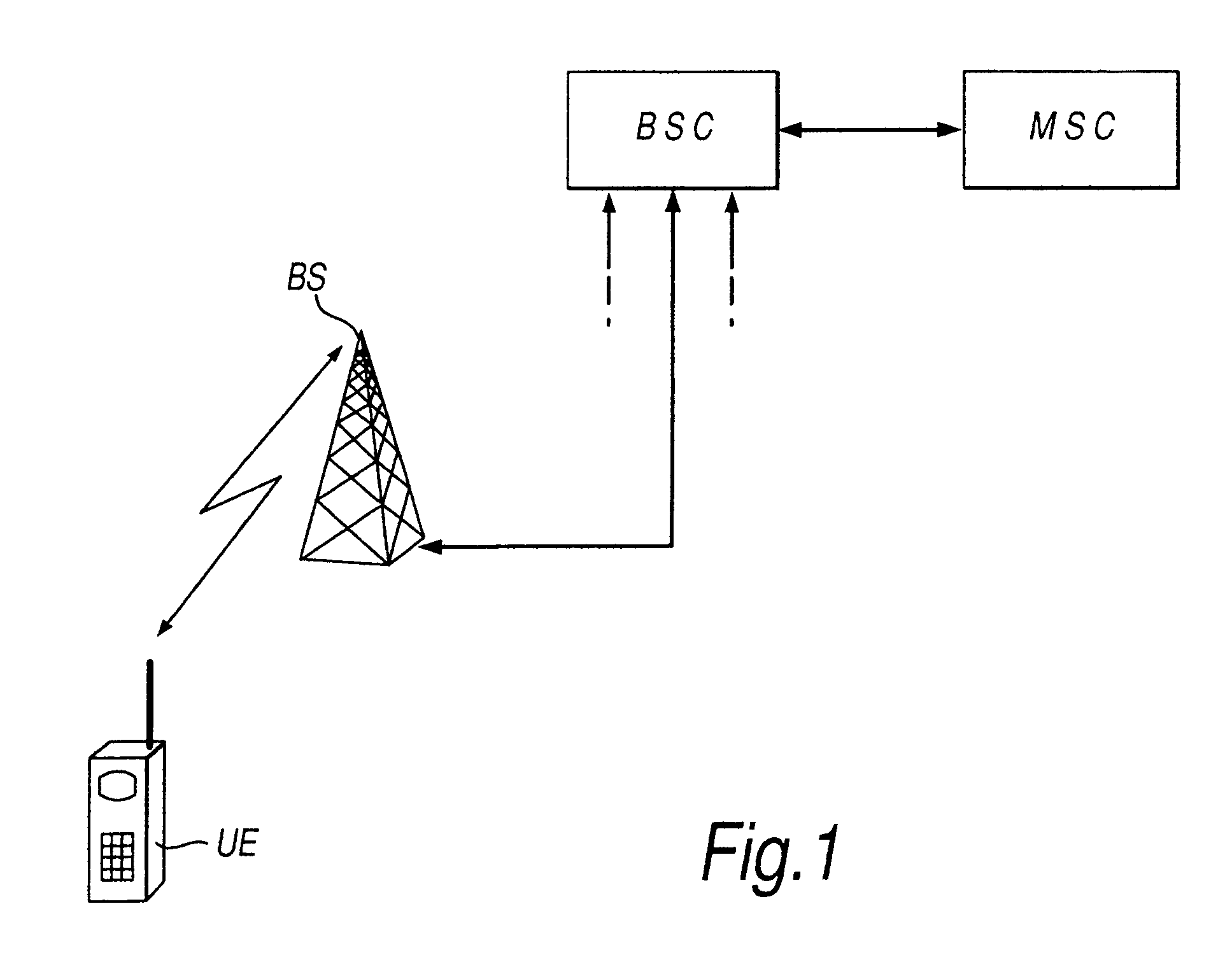Transmission rate changes in communications networks
a technology of transmission rate and communication network, applied in the field of transmission rate changes in communications network, can solve the problems of increased interference, increased chance of reception errors, and increased interference in the overall network, and achieve significant and sudden increase in the interference of the overall network
- Summary
- Abstract
- Description
- Claims
- Application Information
AI Technical Summary
Benefits of technology
Problems solved by technology
Method used
Image
Examples
Embodiment Construction
[0048]FIG. 2 is a block diagram showing parts of a mobile communications network embodying the present invention. The mobile communications network includes a base station (BS) 10 in communication with user equipment (UE) 20. The base station 10 comprises a signal generating portion 12, a transition control portion 14, a transitional signal generating portion 16, and a transmitter portion 18. The user equipment 20 includes a receiver portion 22.
[0049]Operation of the base station 10 and the user equipment 20 will now be described with reference to the flowchart shown in FIG. 3. The flowchart of FIG. 3 is just one example of the actions which can be taken when a change is requested in the transmission rate of a particular signal which is being transmitted from the base station 10 to the user equipment 20. The example of FIG. 3 is for the case when a rate increase is required. Prior to such a request for a rate change, which is received in step S1 of FIG. 3, the signal generating port...
PUM
 Login to View More
Login to View More Abstract
Description
Claims
Application Information
 Login to View More
Login to View More - R&D
- Intellectual Property
- Life Sciences
- Materials
- Tech Scout
- Unparalleled Data Quality
- Higher Quality Content
- 60% Fewer Hallucinations
Browse by: Latest US Patents, China's latest patents, Technical Efficacy Thesaurus, Application Domain, Technology Topic, Popular Technical Reports.
© 2025 PatSnap. All rights reserved.Legal|Privacy policy|Modern Slavery Act Transparency Statement|Sitemap|About US| Contact US: help@patsnap.com



